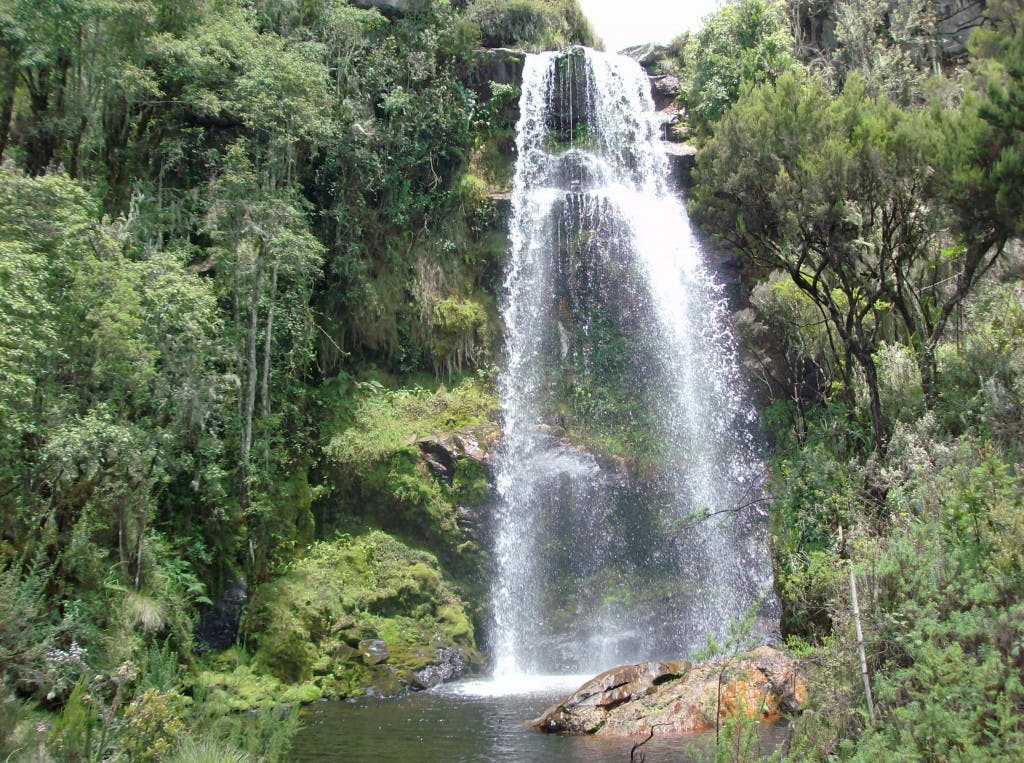Congo’s Rainforest – Demanding to be Valued
Feb 26, 2020
Story


We talk a lot about the new Congo we are envisioning. Mostly we’ve spoken of its heart, its capacity, its inclusive, supportive, embracing bent. But there’s so much more we are anticipating. In fact, we’re not just thinking “Developed Country”, but intending to establish a new category: “Model Country”.
You might think such expectations are far too grand, considering from where we must come. But Congo is steward of a global treasure that demands we become that.
From where we’re sitting, what the world might hope for Congo is not nearly enough. The world sees that Congo’s mineral wealth is unparalleled on the planet; greater than Saudi Arabia’s 18 trillion in oil reserves; greater than the GDP of the U.S. and Europe combined. But in fact, besides its people, its greatest treasure is its rainforest. And it’s not just Congo’s treasure, but one of the world’s lifelines. Its biodiversity is a treasure still not fully explored. And its preciousness as the world’s second largest generator of carbon sequestering and oxygen production must be esteemed, and esteemed in such a way that we as its stewards are properly enabled. But the opposite is in play.
The world is bent on exploiting Congo’s unmonetized wealth, saying that the way to help us is to turn these resources into capital, in order to industrialize our nation. But if that were true, with the amount of our resources already exploited, we would be living in the good of all those intentions. No, how those things play out is that our land is raped, our resources monetized, our authorities enriched, but our people are brutalized and made slave labor. A multitude of statistics reveal that all the affects of the international efforts toward Congo’s “development”, have kept us as the most undeveloped country on the planet.
While I don’t dispute that Congo could benefit from a measure of carefully planned and architected industrialization, there are greater priorities to consider; not just for Congo’s sake, but for the sake of the entire world. In fact, as a result of the West’s industrialization, our depleting forests are carrying a huge debt – their debt. And the informed are well aware of that fact.
Rainforests are often called the lungs of the planet for their role in absorbing carbon dioxide, a greenhouse gas, and for producing oxygen, upon which we all depend for survival. Rainforests also stabilize climate, house incredible amounts of plants and wildlife, and produce nourishing rainfall all around the planet.
Tropical rainforests cover 6% of the Earth's land surface yet harbor over 50% of the Earth's terrestrial biodiversity. However, about 50 million acres (approximately the size of Great Britain) of tropical rainforests are destroyed each year. Much of this deforestation occurs through slash and burn agriculture by subsistence farmers who lack knowledge of sustainable alternatives.
The effects of global warming through slash and burn are enormous. It is responsible for approximately 20% of the total global emissions of CO2 into our atmosphere each year. Deforestation is in fact considered the second major driver of climate change (more than the entire global transport sector).
80% of the nutrients in tropical rainforests are in the vegetation and not in the soil. When a tree dies and its trunk falls to the forest floor, it decays and the nutrients it contains are recycled. However, if trees are removed from the forest, the nutrients are removed with them, and the soil eroded and unproductive within a few years.
When I was a child, our home was at the edge of the Itombwe Forest in Eastern Congo. It was a beautiful area and every day I could go outside and see antelope and other animals. But now the forest is a good 100 kilometers away, due to the slash and burn practices of the various people groups, whether subsistence farmers or cattle ranchers, who move from site to site as they exhaust the soil at each location.
The large city in which I now live, Bukavu, used to be called The Green City. Trees lined every roadway and the houses were built as tucked inside a beautiful woodland. Rainfall was abundant then. But these days, as thousands and thousands of refugees have fled the conflict in the remote areas of our Province, most of the trees have been cut down to build small shelters and for cooking. Now the dry seasons are so long and with the increased population, the reservoirs empty very soon into the dry season and we often have to walk some distance to the lake to retrieve water for our household.
Tropical rainforests took between 60 and 100 million years to evolve and are believed to be the oldest and most complex land-based ecosystem on earth, containing over 30 million species of plants and animals, which is half of the Earth's wildlife and at least two-thirds of its plant species. But in the matter of a generation, irreversible damage can be done.
Rainforests store water like a huge sponge and release billions of tons of moisture every day, helping water crops thousands of miles away. Rainforest trees draw water from the forest floor and release it back in to the atmosphere in the form of swirling mists and clouds. Without rainforests continually recycling huge quantities of water, feeding the rivers, lakes and irrigation systems, droughts would become more common, potentially leading to widespread famine and disease.
More than 25% of our modern medicines originate from tropical forest plants. The rosy periwinkle found in Madagascar, is used to cure leukemia, while the anti-malarial drug quinine is taken from the bark of the Andean cinchona tree. The rauvolfa shrub found in Asian and African forests is used to cure high blood pressure and mental illness. More than 70% of plants with anti-cancer properties are found in the rainforests (according to the US National Cancer Institute). Even so, we have only learned how to use 1% of these amazing plants.
When we visited a Pigmy village in the Itombwe forest in April, the chief gave us the leaves of a plant that they use to relieve the pain from a troubled lower back. Rainforests and the native populations who discovered these medicines could hold the cure to many more diseases if we would only nurture the forests and allow their people to show us. Imagine the possibilities if we could experiment with the 99% of the plants we’ve not yet touched.
Preserving forests and the wildlife that inhabit them has been one of the priorities of the international community since 1992, when Member States developed the Forest Principles to recognize the multiple uses of forests and fight against deforestation. However, despite the Forest Principles, worldwide deforestation has not stopped because of land conversion for agriculture, illegal logging, subsistence farming, industrial activities and cattle ranching.
Climate change is the biggest challenge of the 21st century, and so industrial nations are working hard to reduce the use of fossil fuels; and that’s a good thing. But if we bring the use of fossil fuels to zero and don’t halt deforestation, we will still breach the safe limit of greenhouse gas concentrations. If we don’t act now it could, potentially catastrophically, narrow the time available to make the necessary transition to a low carbon world – so says the IPCC report, the Eliasch Review, Lord Stern and McKinsey and Co.
Millions of people make their living in and from the rainforest. The rainforests need to become worth more alive than dead to us. The word “Product” in GDP needs to include things that contribute to “ecosystem services;” things like biodiversity and carbon sequestration.
For Congo, as a member of the Coalition of Rainforest Nations, to put a moratorium on developing more mines and timber industry, they would require the support of the world, who until now, continues to push Congo to develop its mines (for example, Canada tried to block the 2010 loan forgiveness because the Congo government closed down a Canadian-operated mine). Artisanal miners, wildlife poachers, and illegal loggers would need other employment as game wardens, forest wardens, and so forth, and for that to work there would have to be more money in such professions than in extraction. That is why ecosystem services payments are so important.
In 2010, Ecuador signed a $3.6 billion deal with the international community, not to exploit a small oil-rich patch of the 1 billion acres of the Amazon forest. A legally binding trust fund was set up by the government and the UN. The oil and the timber in that area will never be exploited. The money raised will be administered by the UN Development Program (UNDP) and would go to protect 4.8m hectares of land in Ecuador's other national parks, and to develop renewable energy sources and build schools and hospitals for indigenous groups. That’s a model that works for the world.
You are aware that Congo is a land laden with conflict, and there are scores of papers written that say there is no alternative for the multitude of young men that join the various factions. And of course the desired alternative is jobs. By supporting an initiative to pay Congo for it ecosystem services to the world, job programs would be created in a number of important sectors, and awareness and participation in the value and protection of the forest’s stewardship-heirs would be secured. And the West would begin to do the right thing, in paying down the huge debt they have accumulated over the years by their unrestrained industrialization.
It’s great that the industrial nations are working hard to reduce their use of fossil fuels. But while that’s an important piece, there is much more to consider in developing a global strategy to safeguard our planet’s future. And when considering Congo’s unparalleled wealth, it is obvious that the value of our rainforests to the health of our troubled planet are quite simply, priceless. And for those that would’ve rather just written Congo off as a lost cause, it’s quite obvious that Congo’s fate is directly related to the fate of the entire world. It’s time to come together, for all our sakes.
“Rainforest is the glue that holds the climate of our planet together. Lose the forest and it will have devastating consequences for all life on Earth” -- Professor Sir Ghillean Prance.




